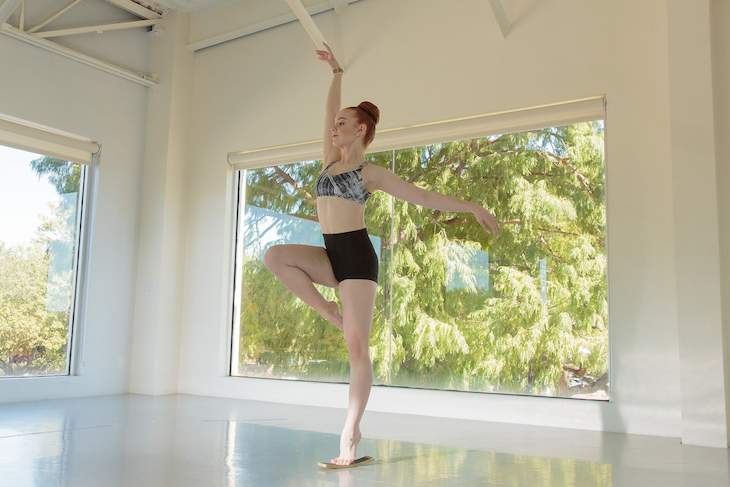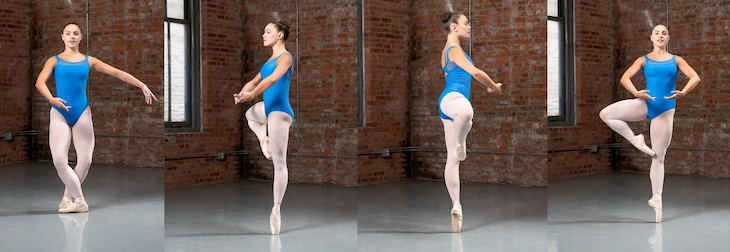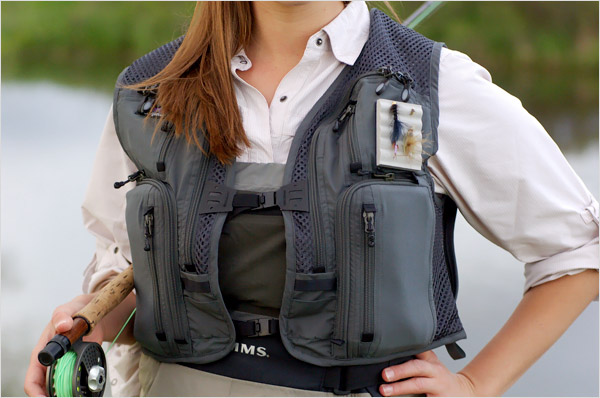Every dancer should be able to perform turns, and one of the numerous sorts of turns you’ll do is the pirouette! Whether on pointe or demi-pointe, a pirouette is a full rotation of the body on one foot that can be done either en dedans -turning inward toward your supporting leg or en dehors -turning outward in the direction of the raised leg.
It’s a fantastic move, but it’s also a basic motion for more advanced ballet dancers. When you master a single turn, you’ll be much better equipped to master more difficult steps that build on it, such as double, triple, and fouetté pirouettes.
Whether a beginner or an intermediate dancer looking to improve your turns, check out the following tips on how to do the perfect turns.
Use a Balance Board
A variety of training tools and goods occasionally enter the market to give dancers a competitive edge and outperform what nature offers. One of the latest trends to improve your confidence in turning and fine-tune spotting is to use a balance board for pirouette. By doing so, you will also improve your body posture and balance.

So, what do these turning boards do? The balance board for pirouette is a slim rectangular board about 27cm in length. It works on the principle of reducing friction between the foot and the floor. This results in very little resistance from the floor, allowing the dancer to spin fast.
A strong core, the appropriate spotting, and maintained balance are requirements for a perfect ballet turn. These turn boards give you the stability and flexibility on the floor that you need to develop the rhythm necessary for a good pirouette. A skilled turner may not need turn boards since they have mastered their spotting, but for those trying to get there, they can be the perfect learning tools.
It is important to take into account the efficiency of the dance turn board for various dance styles. A turn is executed in classical ballet with a Releve to either a demi or full point. However, in some situations, spin boards necessitate the use of a flat foot and may lead to technique issues. So, make sure to know how to use them properly.
Turn discs are also available on the market. These are generally under 6 inches wide and used for practising spins in Releve. Since dancers’ feet would ordinarily make contact with the floor, this effectively pushes the user to practice spins on the balls of their feet. What makes turn discs different from the boards is their oval shape and some slight differences in practice.
However, both turn discs and dance spin boards are becoming more and more common since they promote the perfect form which can easily be packed in your practice duffel bag and carried everywhere you go!
Focus and Relax
One of the most important things to do when mastering your pirouettes is to focus. As a result, your muscles will know what is expected of them, and your body will be coordinated. Reinforce the dynamic of feeling grounded, strong, and supported at the bottom of your dance steps as well as involved at the top of a Releve. The “lows” should be lower and the “highs” higher.
The dancer will have less anxiety and more musical and lovely pirouettes if they can keep their attention on the rhythm rather than the number of turns.
Therefore, the neck needs to be entirely relaxed and able to move about reflexively despite there being many other parts of the body that are energised, flexed, tensed, and engaged. Otherwise, the twists won’t be nice if the neck exhibits any signs of strain or anxiety, making it appear clutched. To ensure that the neck is the proper length and that the head doesn’t feel constrained by raised shoulders, the shoulders must be pushed back and down.
Pay Attention to Your Supporting Leg
Your body weight should be supported by the ball of your foot, with weight evenly distributed across all five toes. Never allow your weight to sag back onto your heel since doing so will make it difficult for you to shift feet fast and will cause your hip flexor to tighten up when you lift your legs.

At the barre, both of your legs—not just the one that moves throughout the combination—are your working legs. Your gluteus should be engaged, the standing leg should be fired, and you should feel your leg sink into the ground. You must have this standing side for your turns. It is the axis around which you will rotate.
Do Not Over- or Under-Cross
Make sure your legs are sufficiently crossed to be squarely opposite your fifth position when performing a common combination, such as a double pirouette from the fourth position. Your front leg should be bearing 99 per cent of your weight, not your middle. You don’t want to have to estimate where your body’s centre would be if it had to swing forward in the middle of a turn. Elevate your back leg into an arabesque to confirm that your weight is forward before you even start the turn.
Make sure the inner thigh of the front leg supporting your weight is actively rotating out. Not into the mirror, but sideways, which should be your knee’s direction! Depending on the type of ballet your studio or school performs, you can have your rear leg straight or bent.
Concentrate for a Better Ending
How many dancers can perform five exquisite turns before carelessly falling out of them? The ending is the final thing the audience sees, and if done well, it shows that the dancer was in perfect control throughout.
A clunky ending, on the other hand, suggests that the entire procedure was an accident and couldn’t be duplicated. Additionally, the finish of the turn frequently marks the start of the subsequent choreography phrase, so this is not the moment to adopt a passive attitude.





















